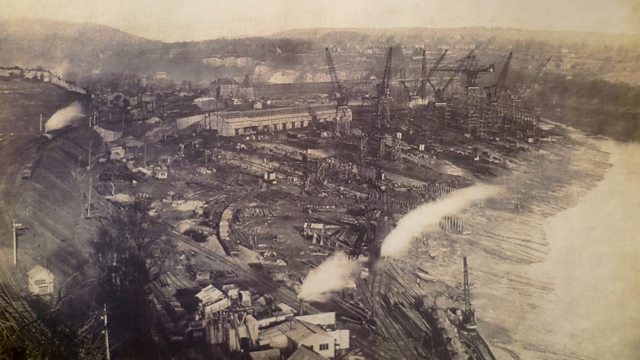Chepstow, Monmouthshire: National Shipyard No.1
One solution to Britain’s loss of shipping: build ships from kits beside the River Wye at Chepstow.
Situated on a tidal stream of the River Wye, Chepstow doesn’t seem the most obvious place to establish a busy shipyard – after all, ships had to be launched sideways, since the river was neither wide nor deep enough to permit the usual stern-first launch. But in World War 1 it was thought this relatively remote backwater might be the solution to a near catastrophic loss of shipping due to the U-boat menace.
In fact, the (then) sleepy market town had long enjoyed some association with boat-building. But it was only with the onset of war that local shipping entrepreneur John Silley, together with Lord Inchcape, woke up to the full economic potential of this location in producing ships of 3,000 tons or even greater.
After Silley had studied the practises of the Ford Motor Company he proposed to apply similar techniques of mass-production to ship-building. Time and money could be saved by building pre-fabricated ships, using a standard design, standard parts, and fitting engines manufactured offsite. Appropriately enough for this kit-built approach, Silley and Inchcape named the firm The Standard Shipping Company.
In 1917 as shipping losses mounted, and Britain faced the darkest days of the submarine war, the government cast around for ways to make good the losses at sea. They nationalised the shipyard, intending it to be replaced by a far larger concern, which was designated National Shipyard Number 1 (National Shipyards Numbers 2 and 3 were to be at nearby Beachley and Portishead respectively). A vast labour force was required for this undertaking, and the sleepy town practically doubled its population overnight, as housing and other amenities had to be provided for the incomers.
Although ships were launched from Chepstow during the war, these were simply the completed products of the Standard Shipping Company. None of the new ships laid down in the new shipyard reached completion until long after the war had ended, by which time the demand and the price of new vessels had plummeted. Beachley shipyard was never finished, whilst Portishead shipyard was never started. All in all, the nationalisation of Chepstow was an expensive failure.
Nevertheless, its consequences remain to this day: the shipyards, and idea of standardising shipping, would come into their own during the Second World War, producing both ships and landing craft, before turning their attention to the manufacture of motorway bridges in peacetime. And, the rapid expansion of the town during wartime would not be reversed. Once it was dominated by agriculture; now it would be dominated by the sights and sounds of heavy industry.
Location: Chepstow, Monmouthshire NP16 5YL
Image courtesy of Local History Association and Dr Naylor Firth
Duration:
This clip is from
Featured in...
![]()
����ý Radio Wales—World War One At Home
Places in Wales that tell a story of World War One
More clips from World War One At Home
-
![]()
The loss of HMY Iolaire
Duration: 18:52
-
![]()
Scotland, Slamannan and the Argylls
Duration: 07:55
-
![]()
Scotland Museum of Edinburgh mourning dress
Duration: 06:17
-
![]()
Scotland Montrose 'GI Brides'
Duration: 06:41







